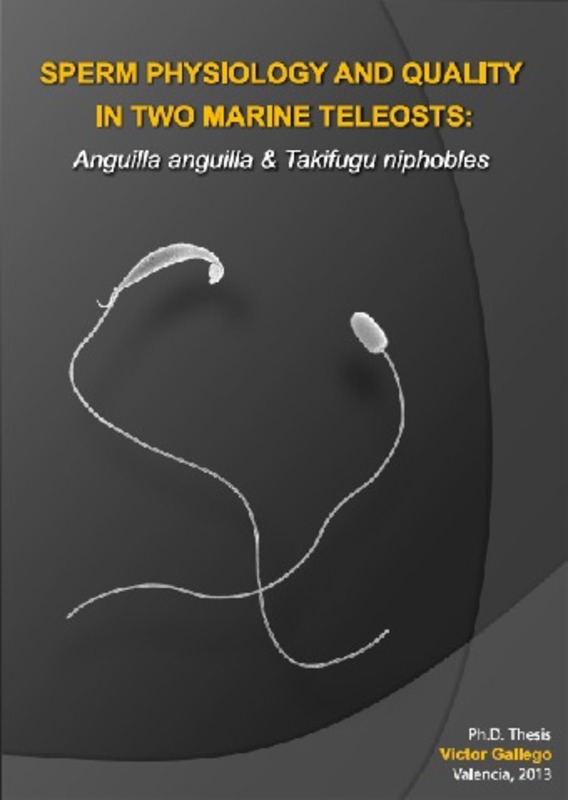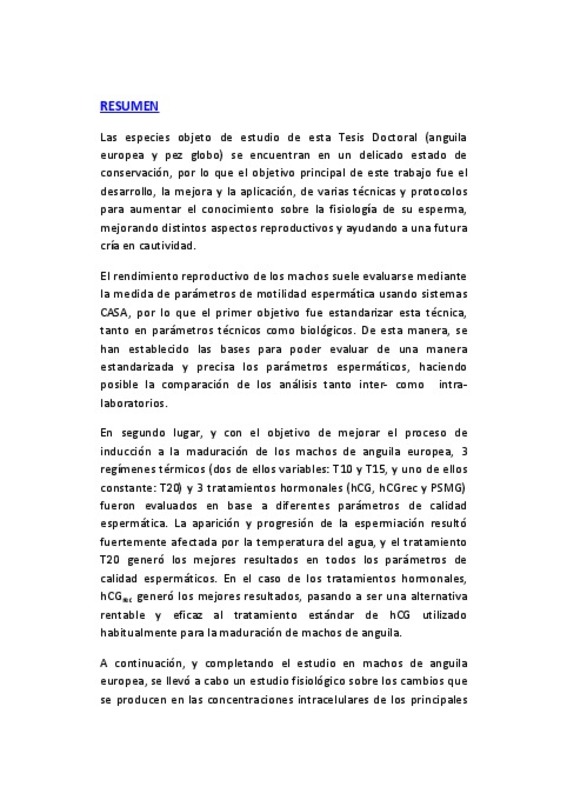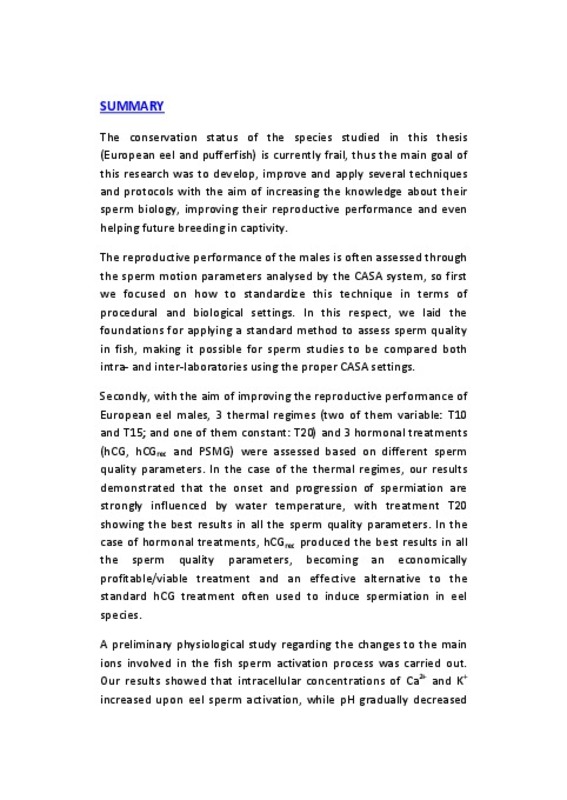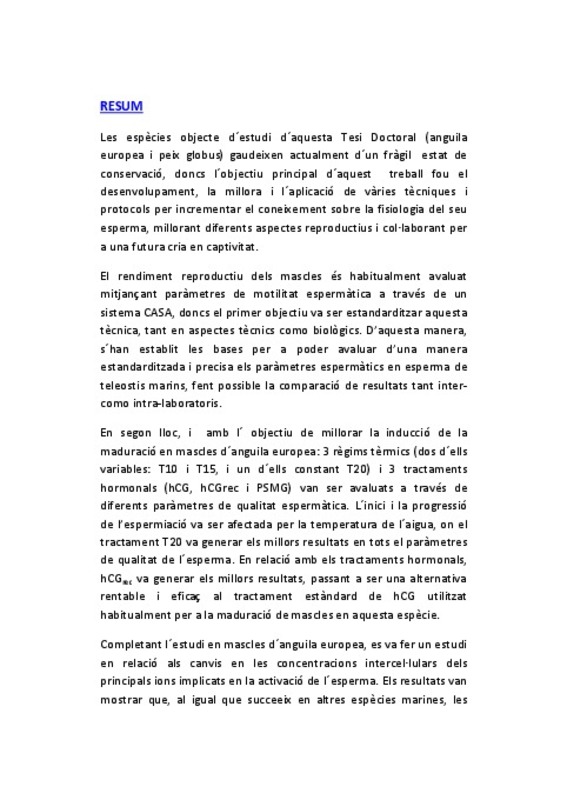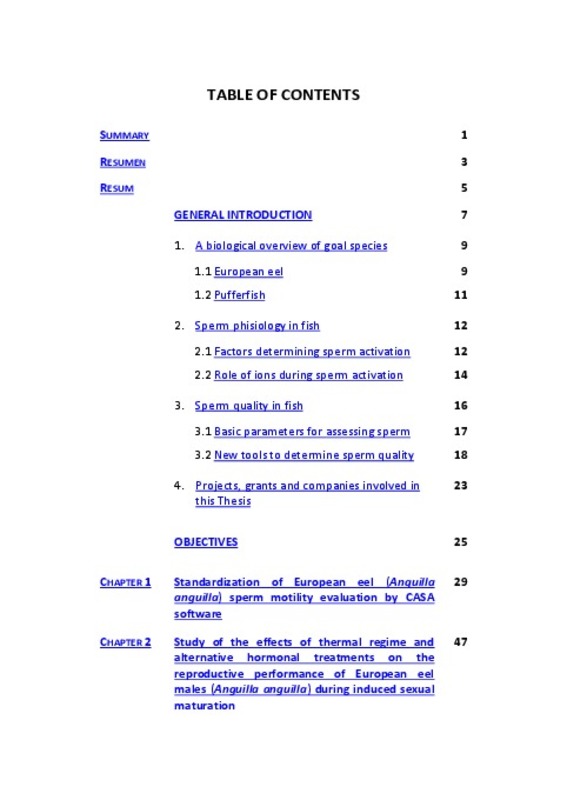|
Resumen:
|
The conservation status of the species studied in this thesis
(European eel and pufferfish) is currently frail, thus the main goal of
this research was to develop, improve and apply several techniques
and protocols ...[+]
The conservation status of the species studied in this thesis
(European eel and pufferfish) is currently frail, thus the main goal of
this research was to develop, improve and apply several techniques
and protocols with the aim of increasing the knowledge about their
sperm biology, improving their reproductive performance and even
helping future breeding in captivity.
The reproductive performance of the males is often assessed through
the sperm motion parameters analysed by the CASA system, so first
we focused on how to standardize this technique in terms of
procedural and biological settings. In this respect, we laid the
foundations for applying a standard method to assess sperm quality
in fish, making it possible for sperm studies to be compared both
intra- and inter-laboratories using the proper CASA settings.
Secondly, with the aim of improving the reproductive performance of
European eel males, 3 thermal regimes (two of them variable: T10
and T15; and one of them constant: T20) and 3 hormonal treatments
(hCG, hCGrec and PSMG) were assessed based on different sperm
quality parameters. In the case of the thermal regimes, our results
demonstrated that the onset and progression of spermiation are
strongly influenced by water temperature, with treatment T20
showing the best results in all the sperm quality parameters. In the
case of hormonal treatments, hCGrec produced the best results in all
the sperm quality parameters, becoming an economically
profitable/viable treatment and an effective alternative to the
standard hCG treatment often used to induce spermiation in eel
species.
A preliminary physiological study regarding the changes to the main
ions involved in the fish sperm activation process was carried out.
Our results showed that intracellular concentrations of Ca2+
and K+
increased upon eel sperm activation, while pH gradually decreased over time, thus it is likely that all of them play an important role in
the initiation of sperm motility in the European eel, as with other
marine and freshwater teleosts.
In the second part of this thesis, which focuses on the pufferfish, an
in-depth study into the sperm of this species was carried out for
future application in aquacultural matters. A short-term storage
method for pufferfish sperm was developed, enabling us to preserve
the sperm quality parameters for a relatively long time period (7
days) compared to fresh sperm samples. Moreover, the effects of
both the osmolality and the ion composition of the activation media
on the sperm motion parameters were evaluated, concluding that
both factors play an essential role in the initiation of sperm motility
of pufferfish sperm and probably, in marine fish sperm.
Finally, in vitro fertilization trials were developed to assertain how
the quantity and quality of male gametes affects the fertilization and
hatching rates. We demonstrated that sperm/egg ratio and sperm
quality are strongly related factors, suggesting that both should be
taken into account as unique interrelated elements. In addition,
coefficients of correlation among all the spermatozoa motion
parameters provided by a CASA system and fertilization and hatching
rates were estimated for the first time in a marine species.
Spermatozoa velocities showed the highest coefficients (¿0.80),
suggesting that the kinetics of the spermatozoa are a key factor in
the fertilization process.
[-]
|







